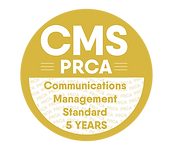Arm's-Length Bodies – what are they?
22 November 2016 - by Anna MercerJust what is an arm's-length body and are there too many? Today's DUP motion calls for a review of the number and function of arm's-length bodies, or ALBs, so as to ‘maximise the available revenue’, but just who and what are our ALBs?
According to Cabinet Office guidance, the two main categories within the public sector are public bodies and arm's-length bodies.
A public body is a formally established organisation that is (at least in part) publicly funded to deliver a public or government service, though not as a ministerial department. The term refers to a wide range of entities that are covered within the public sector. This does not include forms of public entity that do not require staff to operate, such as public funds or trusts.
ALBs are a specific category of public body that can include executive agencies (‘EA’), non-departmental public bodies (‘NDPBs’) and non-ministerial departments (‘NMDs’).
NI Direct goes on to give more detail on NDPBs, describing the two main categories as executive NDPBs and advisory NDPBs.
Executive NDPBs are those with executive, administrative, commercial or regulatory functions. They fulfil set functions within a government framework, though the degree of operational independence varies. Examples include the Housing Executive, Sport NI and the Consumer Council.
Advisory NDPBs are those set up by ministers to advise them and their departments on particular matters. Examples include the Historic Buildings Council, the Historic Monuments Council and the Commissioner for Older People.
There are also North/South bodies, such as Waterways Ireland and IntertradeIreland. These exist on an all-island basis under the remit of the North South Ministerial Council, with clear lines of accountability back to the Oireachtas and the Northern Ireland Assembly. However, these bodies, established under the Good Friday Agreement would be largely protected from any cull.
With over 100 ALBs in total, and in the context of cuts in spending within the public sector, some have argued that there are too many. In the Review of Public Administration (RPA) a “cull” of quangos was mooted but never implemented, largely due to political issues.
While there has been much criticism about the size of the public sector in Northern Ireland, it is important to note the positive role fulfilled by these organisations . They provide independence on many issues which could be either politically toxic, such as the Parades Commission, or which benefit from expert opinion, as with many of the Commissions.
Today’s DUP motion may signal that moves are afoot to merge functions and ultimately begin a process of reducing the ALB estate, in keeping with a move towards streamlining all aspects of governance in Northern Ireland. But past attempts tell us that this is not always a straight forward process.
The wording of the motion set to be debated on Tuesday 22 November is as follows:
Motion: Review of Arm's-Length Bodies
Proposed:
That this Assembly notes the reduction in the number of Government departments and the associated efficiencies; and calls on the Executive to review the number and function of its arm's-length bodies with a view to reducing their number, where possible, and maximising the available revenue.
Mr C Stalford
Mr W Irwin
Mrs P Cameron
Mr P Logan








